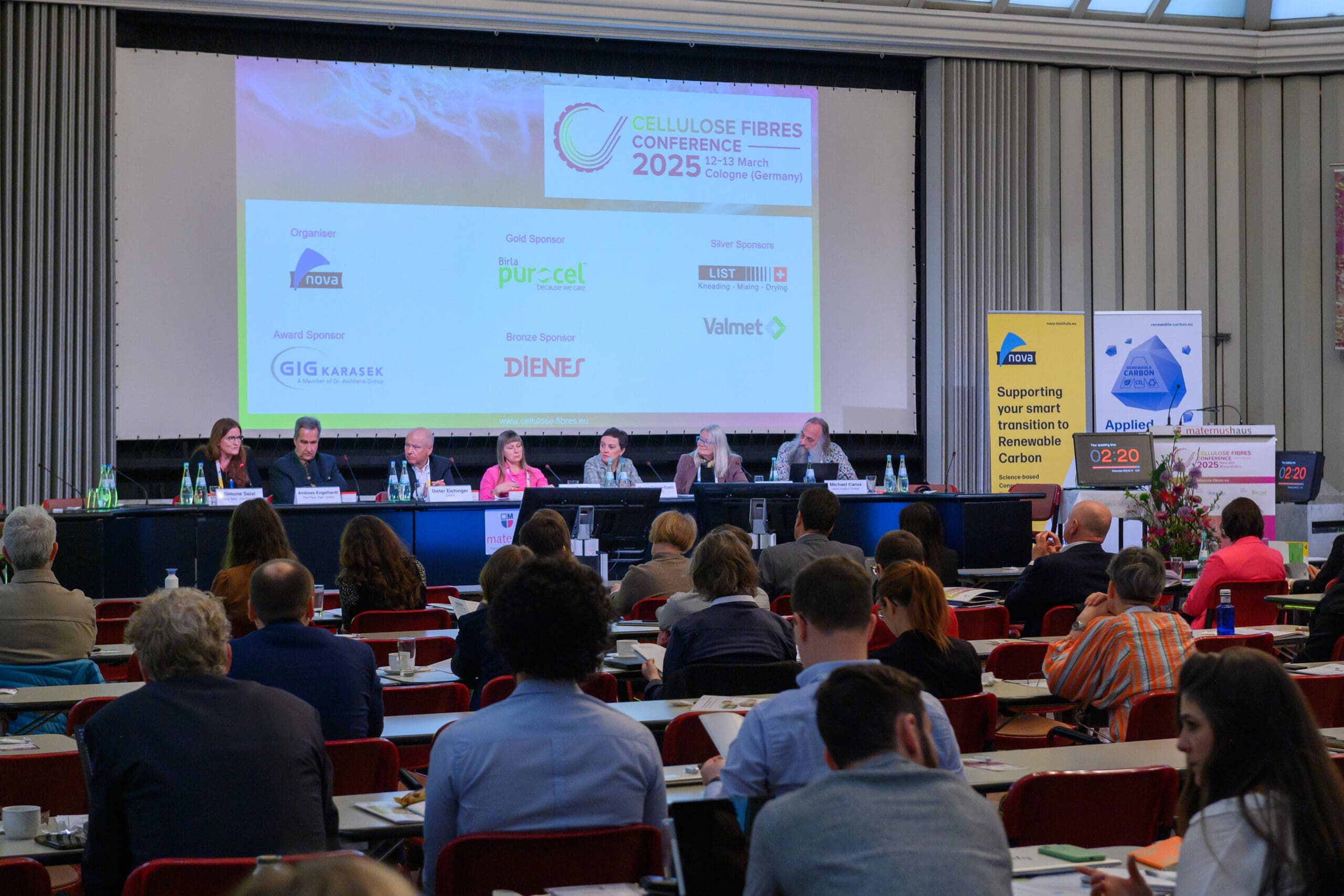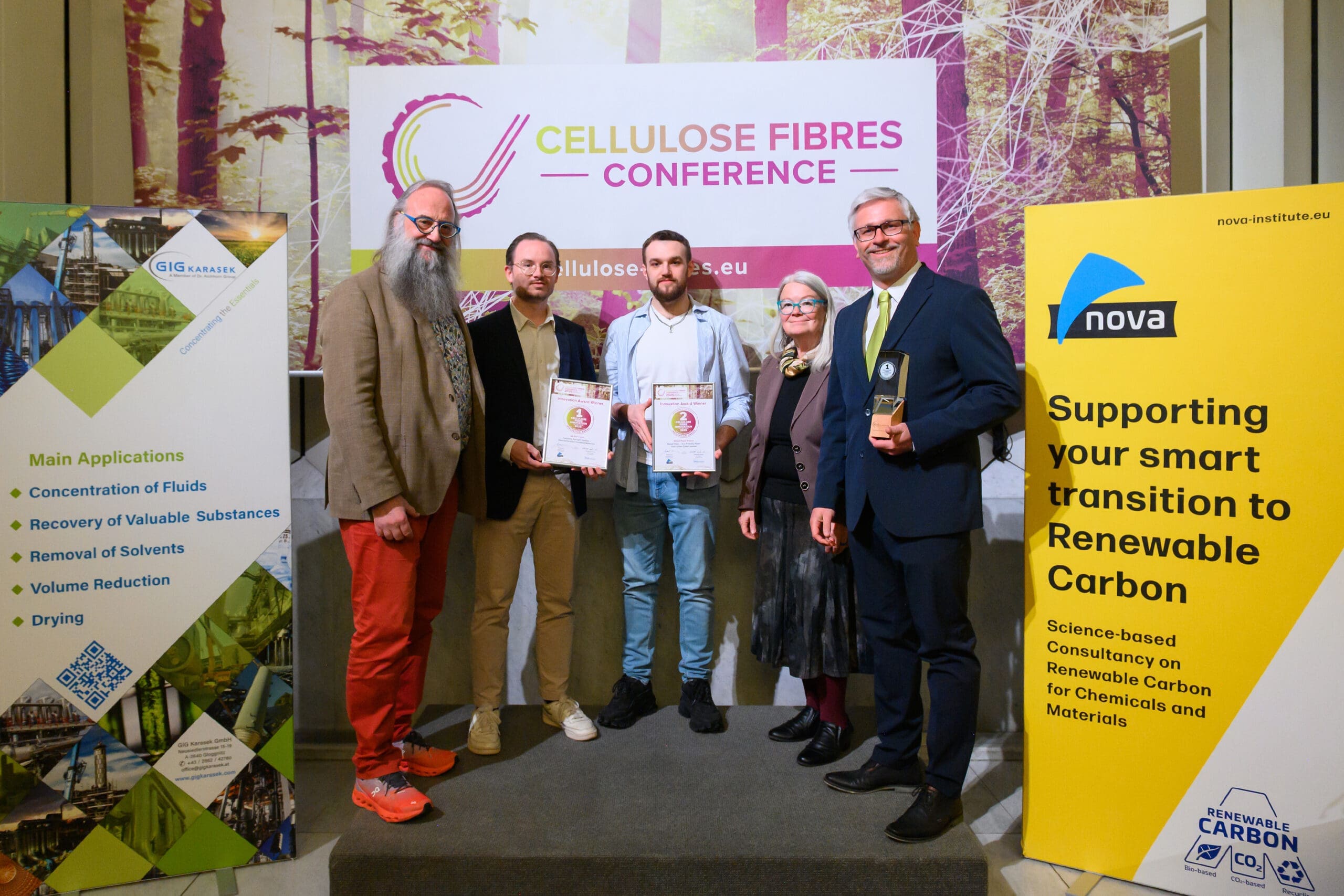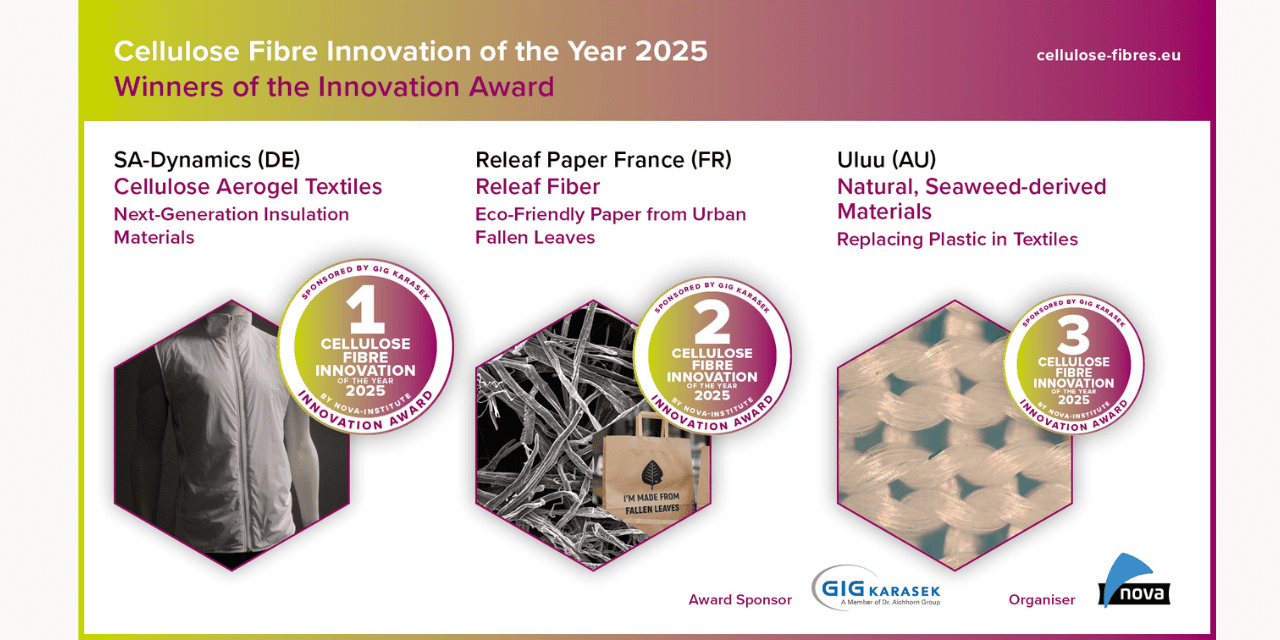The Cellulose Fibres Conference 2025 (CFC 2025), held on 12-13 March in Cologne, Germany, successfully brought together industry leaders, innovators, and researchers to explore the latest advancements in cellulose fibres for textiles, hygiene products, and packaging. With around 200 participants from 22 countries, the event reinforced its status as the leading international platform for the emerging cellulose fibre industry.

Exploring Sustainable Fibre Innovations
The conference highlighted key developments in cellulose fibre production, primarily sourced from wood-based chemical pulp. Additionally, new raw materials such as agricultural waste, paper-grade pulp, and recycled textiles were explored, showcasing their potential to revolutionize the market.
For the first time, biosynthetics were featured prominently at the event, drawing significant interest. Experts examined the scalability, biodegradability, and performance of biosynthetics compared to traditional fossil-based synthetic fibres, marking a crucial step toward sustainable textile alternatives.
Dynamic Engagement and Scientific Discourse
CFC 2025 fostered lively discussions on key topics, including:
- Circular economy strategies and fibre-to-fibre recycling
- Marine biodegradability vs. fibre microplastic formation
- Alternative feedstocks for cellulose fibre production
- Innovative technologies for pulp, fibres, biosynthetics, and yarns
Rahul Bansal, Vice President & Head of the Global Nonwoven Business at Birla Cellulose (India), emphasized the significance of the event: “The Cellulose Fibres Conference provides a unique platform for the entire cellulose fibre value chain. As the world shifts towards plastic-free products, cellulose-based fibres are witnessing increased investment in innovation and process development for enhanced sustainability.”
Market Trends and Industry Growth
- Andreas Engelhardt (The Fiber Year, Switzerland) highlighted the strong investment in cellulose fibre production, with 200,000 tonnes of additional capacity per year being introduced globally.
- Marina Crnoja-Cosic (Textile ETP, Belgium) projected 17% annual capacity growth for cellulose fibres between 2024 and 2029, with most investments directed towards Lyocell production.
- Simone Seisl (CR Consultant, Germany) noted that Lyocell is gradually replacing traditional viscose and cotton, as cotton production faces challenges due to climate change.
To support industry development, Dieter Eichinger (CIRFS, Belgium) proposed a new standard for classifying cellulose fibres, including Viscose, Lyocell, Tencel, Modal, Cupra, and other emerging innovations under the generic term “cellulose fibres”. The proposal received widespread support, with Anna Palmberg (IKEA, Sweden) expressing interest in increasing cellulose fibre use in the company’s products.
Innovation Award Winners

CFC 2025_Innovation Award Winners-scaled
A major highlight of the conference was the “Cellulose Fibre Innovation of the Year 2025” awards, sponsored by GIG Karasek. For the first time, the award also recognized innovations in biosynthetics. The three outstanding winners were:
- SA-Dynamics (Germany): Cellulose Aerogel Textiles
SA-Dynamics introduced 100% biodegradable cellulose aerogel fibres, combining flexibility with superior thermal insulation properties for applications in textiles and construction.
[Website: https://sa-dynamics.com] - Releaf Paper France (France): Releaf Fiber
Releaf Paper France developed a low-temperature extraction process to transform urban fallen leaves into high-quality cellulose fibres, providing a sustainable alternative to hardwood pulp.
[Website: https://www.releaf-paper.com/releaf-fiber/] - Uluu (Australia): Seaweed-Derived Biosynthetic Materials
Uluu, in collaboration with Deakin University, is developing biodegradable textile fibres from farmed seaweed, offering an alternative to plastic-based polyester and eliminating microplastic pollution.
[Website: https://www.uluu.com.au]
Networking and Industry Collaboration
The conference featured extensive networking opportunities, including a matchmaking tool, which facilitated over 50 business meetings. Additionally, a German bowling evening fostered a lively and informal atmosphere for strengthening industry connections.
Acknowledging Sponsors
CFC 2025 was made possible through the generous support of its sponsors, including GIG Karasek, Birla Purocel, List Technology AG, Valmet, and DIENES.
DDI Wolfgang Aichhorn, Head of Sales & Marketing at GIG Karasek, highlighted the event’s commitment to innovation: “Each year, the Cellulose Fibres Conference showcases groundbreaking advancements, reaffirming the immense potential of sustainable fibres.”
Looking Ahead
The success of CFC 2025 underscores the industry’s commitment to shaping a sustainable, bio-based textile future. As the market for cellulose fibres and biosynthetics continues to expand, the conference will remain a vital hub for innovation, collaboration, and knowledge exchange.
Stay tuned for updates on CFC 2026!

